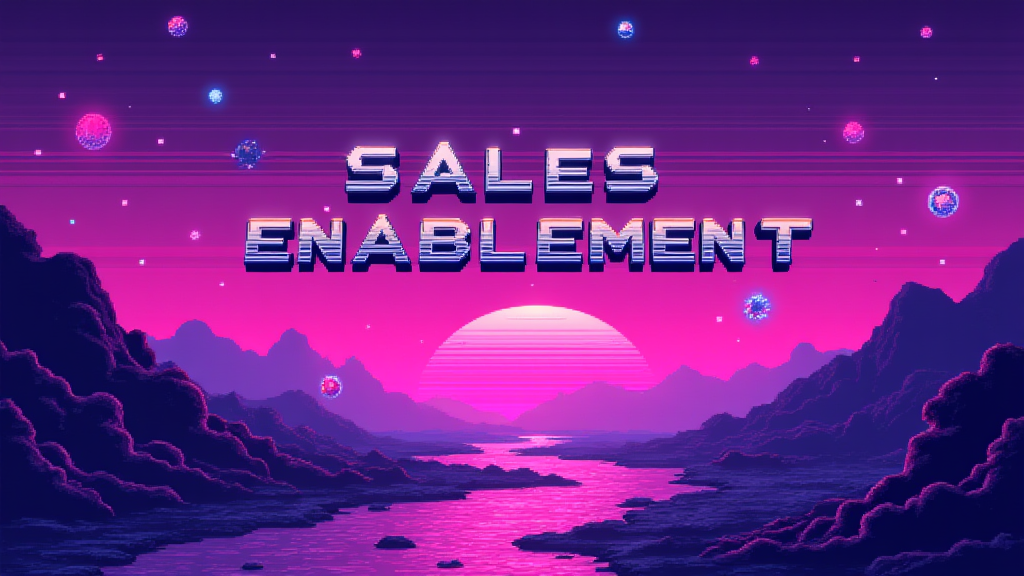Sales Enablement: Empowering Your Sales Team

Published on: October 01, 2024
In today's competitive business landscape, organizations are constantly seeking ways to boost their sales performance and drive revenue growth. Enter sales enablement, a strategic approach that equips sales teams with the tools, knowledge, and resources they need to excel in their roles and close more deals effectively. 🚀
Sales enablement is the process of providing sales teams with the content, training, and technology they need to engage buyers more effectively throughout the sales process. It's a collaborative effort between sales, marketing, and other departments to optimize the sales team's performance and drive better results.
Why is Sales Enablement Important? 🤔
Sales enablement plays a crucial role in modern sales organizations for several reasons:
- Improves sales productivity and efficiency
- Enhances the buyer's experience
- Aligns sales and marketing efforts
- Accelerates onboarding and reduces ramp-up time for new hires
- Increases win rates and deal sizes
Key Components of Sales Enablement 🔑
A comprehensive sales enablement strategy typically includes the following components:
1. Content Management
Providing sales reps with easy access to up-to-date, relevant content such as case studies, whitepapers, and product information.
2. Training and Coaching
Ongoing education and skill development to keep sales reps informed about products, industry trends, and best practices.
3. Technology and Tools
Implementing and maintaining sales enablement platforms, CRM systems, and other tools to streamline sales processes. For more information, check out sales enablement platforms.
4. Analytics and Reporting
Tracking and analyzing key performance metrics to identify areas for improvement and measure the impact of enablement initiatives.
Sales Enablement Best Practices 💡
- Align sales enablement with business goals
- Foster collaboration between sales and marketing teams
- Personalize enablement efforts to individual rep needs
- Continuously gather feedback and iterate on your approach
- Leverage technology to scale your enablement efforts
Measuring Sales Enablement Success 📊
To gauge the effectiveness of your sales enablement initiatives, consider tracking these key performance indicators (KPIs):
| KPI | Description |
|---|---|
| Win Rate | Percentage of opportunities that result in closed-won deals |
| Time to Productivity | How quickly new hires reach full productivity |
| Content Usage | How often sales reps use provided content in their sales process |
| Average Deal Size | The average value of closed-won deals |
| Sales Cycle Length | Time it takes to close a deal from initial contact |
Common Challenges in Sales Enablement 🚧
While sales enablement can significantly improve sales performance, organizations may face some challenges in implementation:
- Resistance to change from sales reps
- Difficulty in measuring ROI
- Lack of alignment between sales and marketing
- Information overload for sales reps
- Keeping content and training up-to-date
Overcoming these challenges requires a strategic approach, clear communication, and ongoing commitment from leadership and all involved departments.
The Future of Sales Enablement 🔮
As technology continues to evolve, so does the field of sales enablement. Some emerging trends include:
- AI-powered sales coaching and content recommendations
- Virtual and augmented reality for immersive training experiences
- Advanced analytics for more precise performance tracking and forecasting
- Increased focus on buyer enablement alongside seller enablement
By staying ahead of these trends, organizations can ensure their sales enablement strategies remain effective and competitive in the ever-changing business landscape.
Implementing Sales Enablement in Your Organization 🎯
To successfully implement or improve your sales enablement efforts, consider asking yourself these questions:
- What are our current sales challenges, and how can enablement address them?
- How can we better align our sales and marketing teams?
- What tools or technologies could enhance our sales process?
- How can we measure the impact of our sales enablement initiatives?
- What skills or knowledge gaps exist in our sales team, and how can we address them?
By thoughtfully answering these questions and developing a strategic plan, you can create a robust sales enablement program that drives results and empowers your sales team to reach new heights of success. 🚀
















